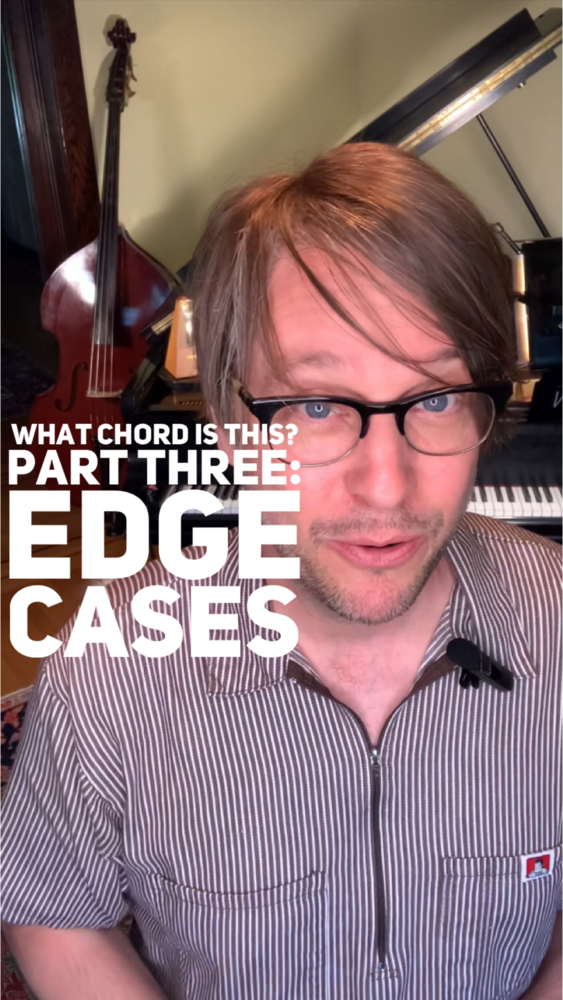Today is part three in our series on identifying chords and we’re looking at the edge cases. By that I mean chords that don’t sit within a perfect fifth, so diminished and augmented chords. We’re also going to look at suspended chords.
A chord that has a flatted fifth has only six half steps. If it is a major third, it is just called a flat five chord. If that chord has a minor third, it is a diminished chord.
A chord that has a raised fifth has eight half steps. And if it’s a major third, it is called an augmented chord. There is no such thing as an augmented fifth with a minor third because if we play leapfrog enough we will see that this is just an inverted chord.
This one is an A flat. Suspended chords are unusual in that they don’t have a third, at least not yet. We kind of leave you hanging.
We can have a suspended four chord and this F is just waiting to resolve itself to an E. There is also such thing as a suspended two. There’s lots more to say about all this, but we’ve covered all the major chord groups.
By putting the notes in order we were able to see major and minor chords, we were able to see the dominant and major seventh versions of both of those, and now we’ve seen augmented, diminished and suspended chords. Good job.

